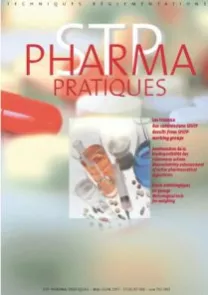Nos publications
A systematic approach to formulate and evaluate the stability of topical creams with high concentrations of Transcutol® HP
AAPS PharmSci 360 – Washington DC (USA) - nov 2018
In this study the authors developped stable anhydrous and hydrous creams containing 40% Transcutol® HP, using predictive techniques to select appropriate excipients.
Skin Penetration and Permeation Properties of Transcutol®—Neat or Diluted Mixtures
AAPS PharmSciTech, Vol. 19, No.8 DOI: 10.1208/s12249-018-1196-8 - nov 2018
In this critical article, the authors have reviewed numerous studies in order to elucidate the mechanism of action of the highly purified diethylene glycol monoethyl ether TRANSCUTOL® on skin penetration and permeation.
Development of a daphnetin transdermal patch using chemical enhancer strategy: insights of the enhancement effect of Transcutol P and the assessment of pharmacodynamics.
Drug Dev Ind Pharm. 2018 Oct;44(10):1642-1649. doi: 10.1080/03639045.2018.1483391. Epub 2018 Jul 2. - jui 2018
A patch for transdermal delivery of daphnetin was developed using Transcutol® P as permeation enhancer.
The study showed:
10% Transcutol® P led to a significant increase in drug release from the patch.
Patch exhibited analgesic and anti-inflammatory activity
Gels, crèmes, formes semi-solides : de leur développement à leur enregistrement. [Gels, creams, semi-solid forms: from their development to their registration]
STP Pharma Pratiques – September October 2018 – 28(5) 181-250 – ISSN 1157-1497 - 2018
The SFSTP commission on topical dosage forms published an article reviewing all the steps for their development to registration.
Interestingly this article is both in French and English languages.
Table of content:
Introduction
I Definition of a semi-solid
II Tests and studies applicable in evaluation of semi-solid forms from development up to the phase of routine use
2.1 Regulatory requirements
2.2 Relevant tests in development
2.2.1 Conventional characterization tests
2.2.2 Characterization tests specified to evaluate performance of the formulation
2.2.3 Additional characterization tests specified to evaluate performance of the formulation
III QbD approach related to the formulation
3.1 Different elements of the QbD
3.2 When to set up QbD ?
3.3 Definition of QTPP
3.4 CQAs toward evaluation of risks of process
3.5 Example of CMAs studied in case of a semi-solid formulation
3.6 Example of CPPs studied in case of a semi-solid formulation
Conclusion
IV Conclusions and perspectives
